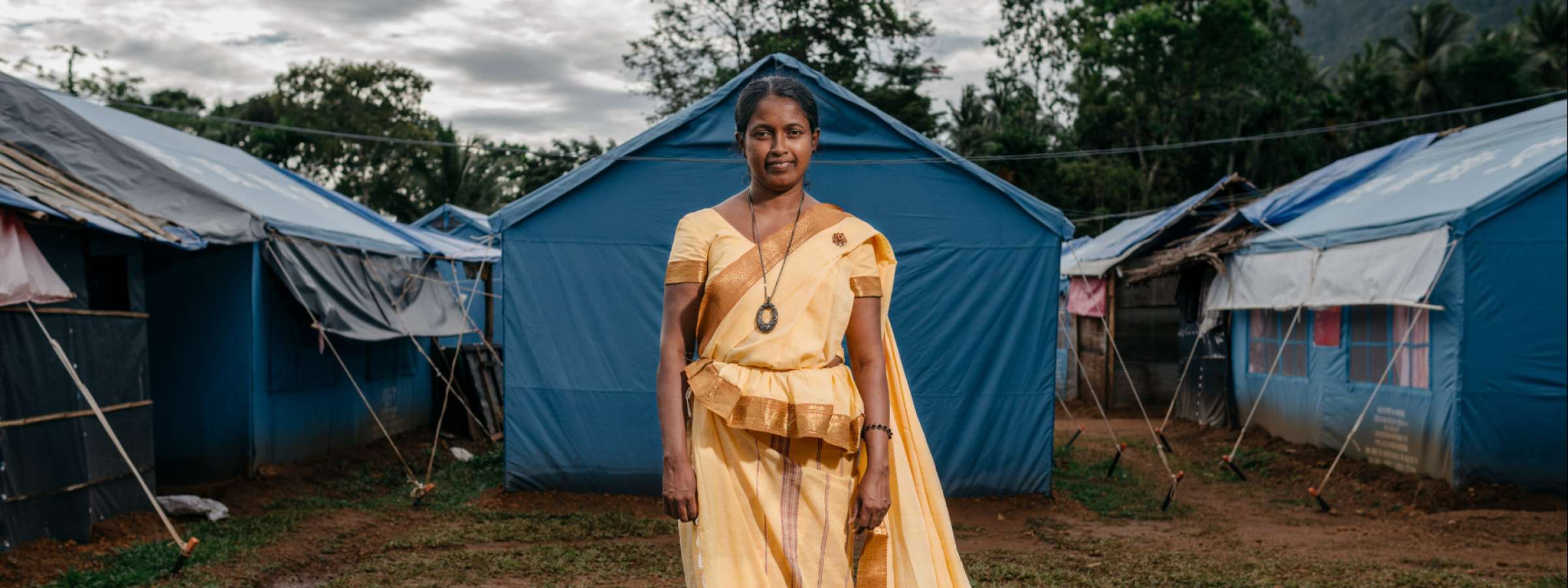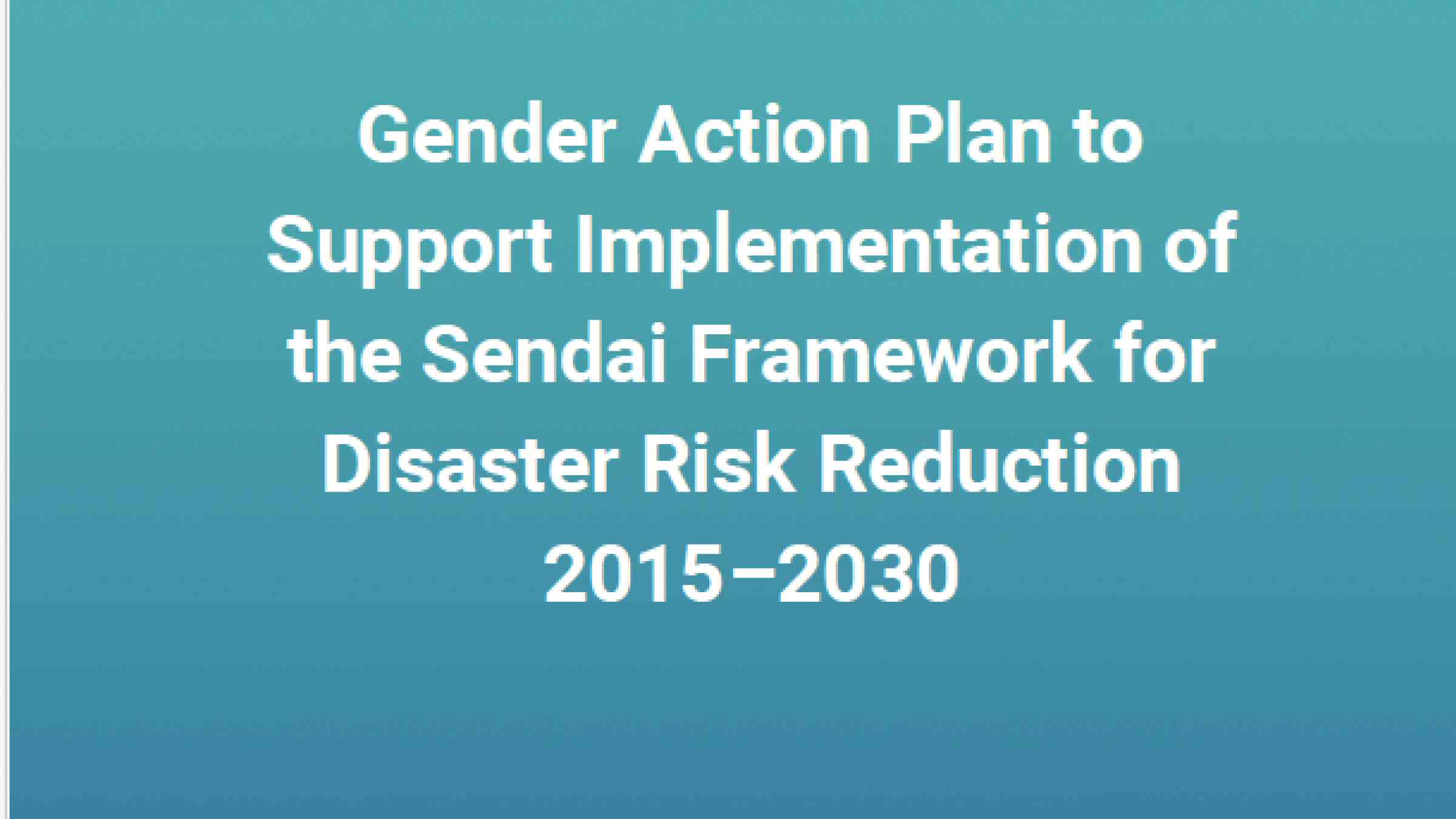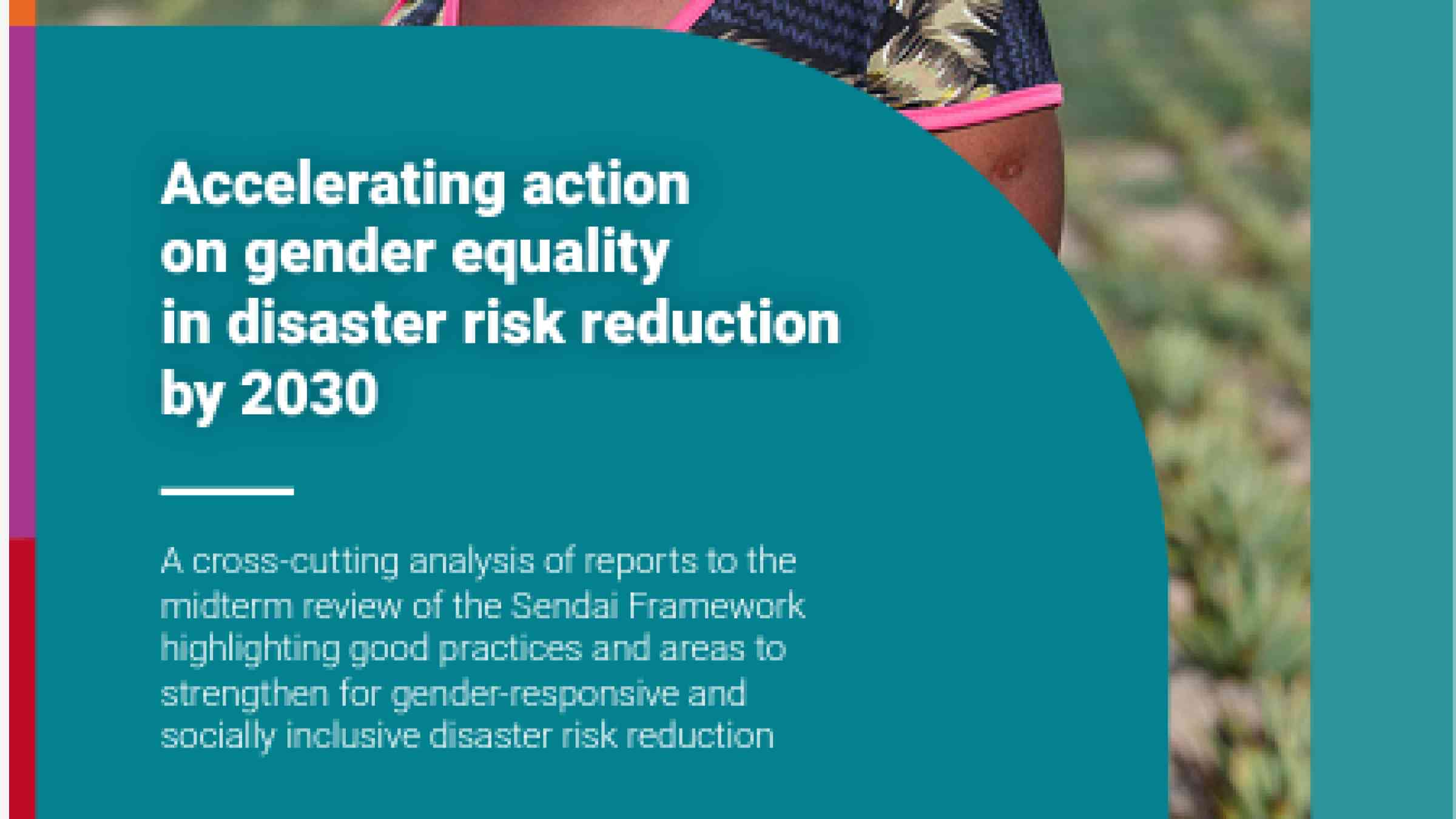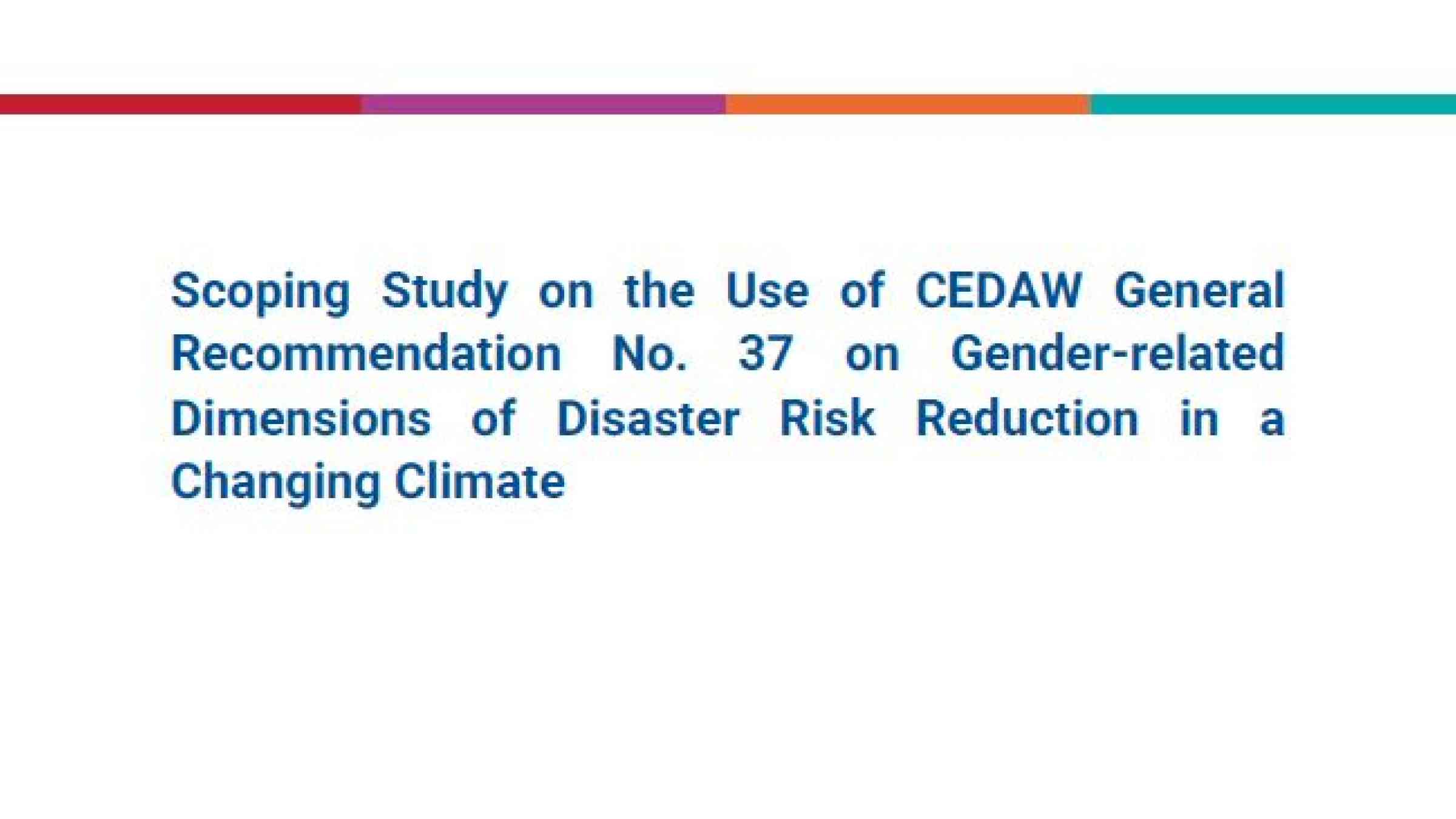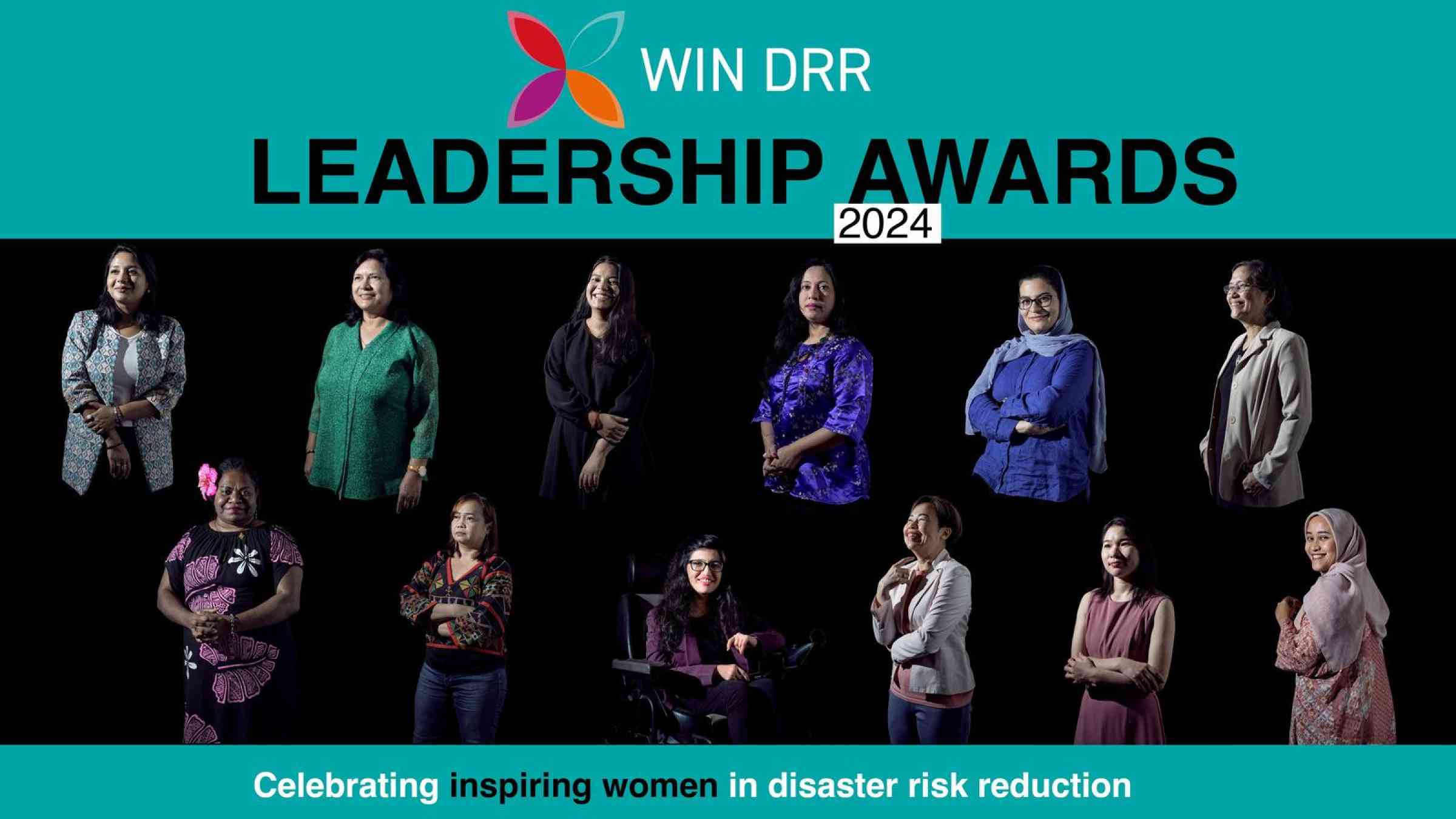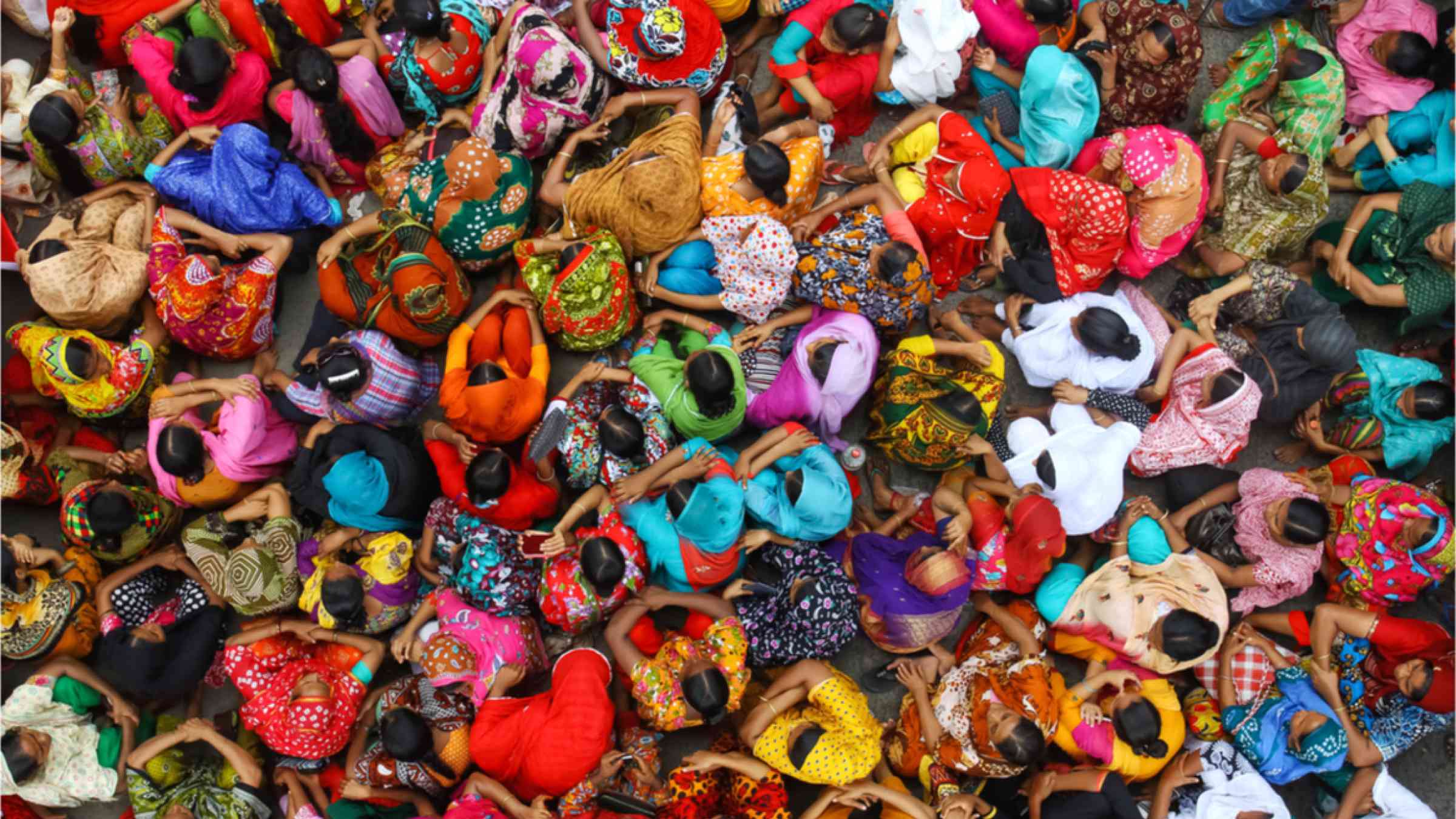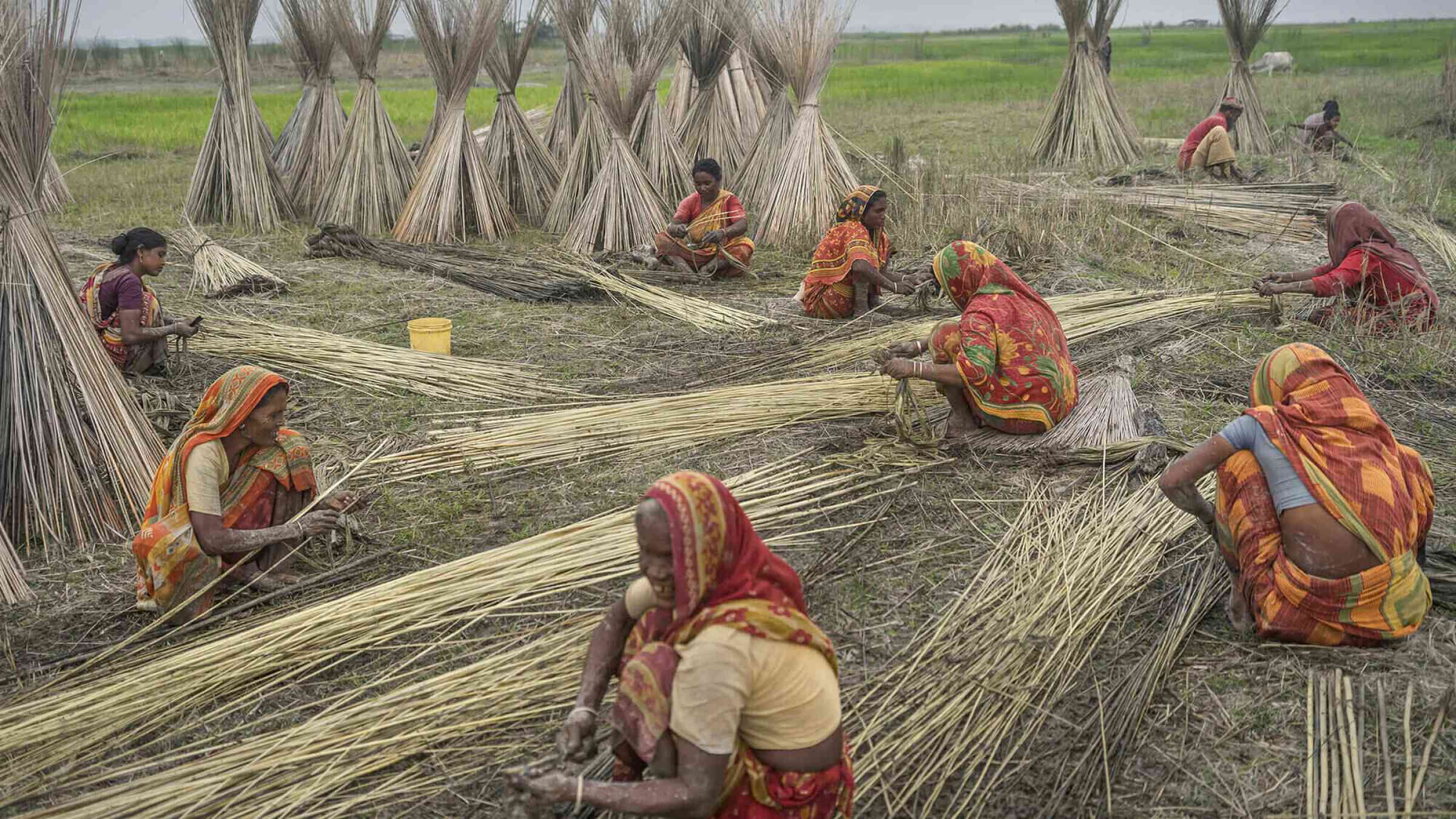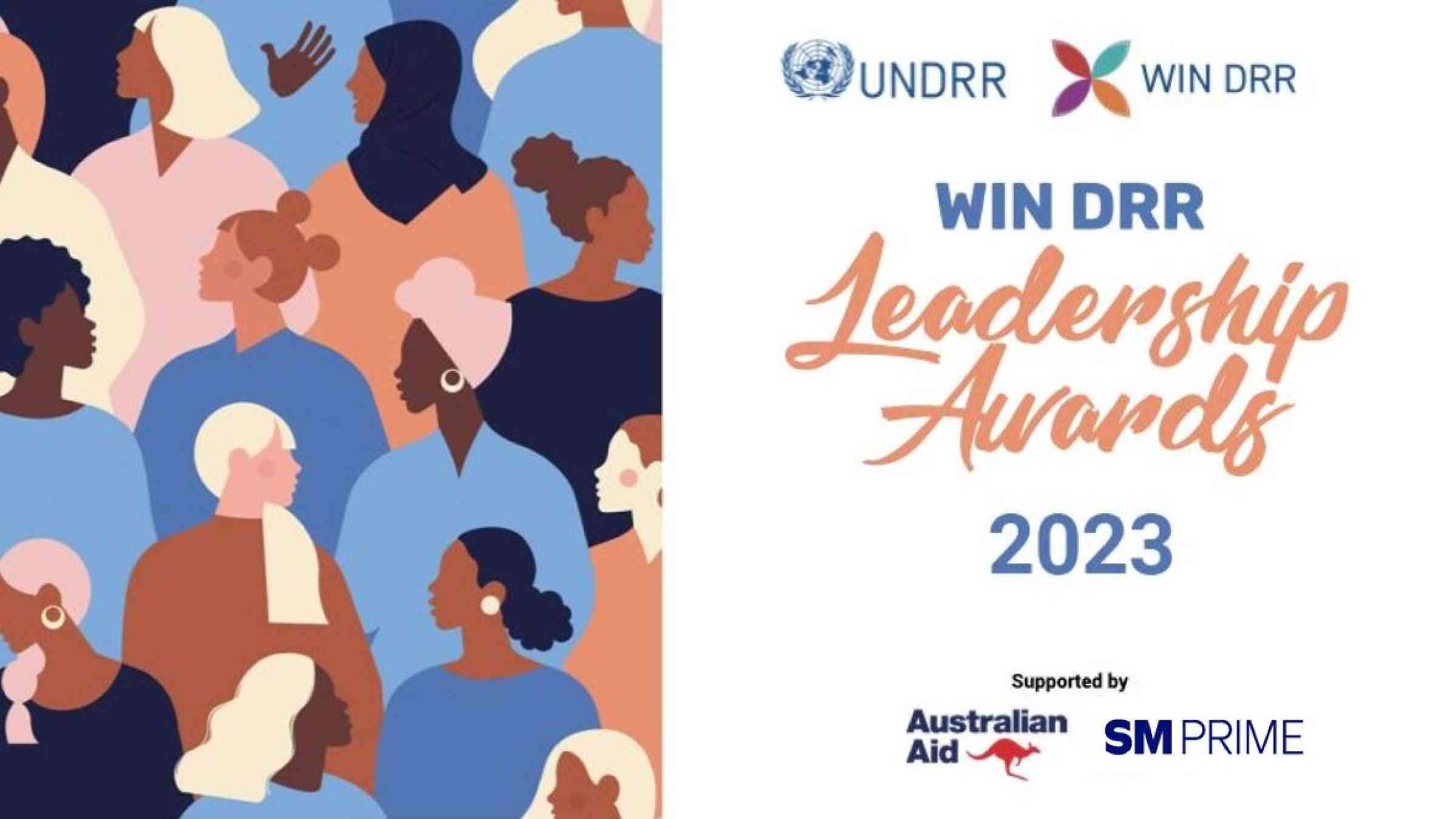In the past twenty years, climate-related disasters have almost doubled, exacerbating inequalities within and between countries. The Sendai Framework recognizes the importance of integrating a gender perspective into all DRR policies and practices, and the need to empower women to publicly lead and promote gender equitable and universally accessible response, recovery, rehabilitation and reconstruction.
Gender inequalities, which exist in every society, result in gender-differentiated disaster impacts. Gender discrimination can impact the control that women and girls have over the decisions that govern their lives, as well as their access to resources and opportunities, which heightens exposure to risk and can results in disasters having a disproportionate impact on women and girls. But equally, ideas and understandings of masculinities and the roles and responsibilities of men in a society can result in men and boys experiencing higher mortality in some disaster contexts. Understanding the impact of gender norms, roles and relations on people’s lives within a given culture and society is critical to reducing disaster risk.

The Gender Action Plan to support implementation of the Sendai Framework for Disaster Risk Reduction 2015-2030 (Sendai GAP) has been launched and is available now. The Sendai GAP aims to accelerate progress towards the mutually reinforcing goals of gender equality and the prevention and reduction of disaster risk by ensuring DRR efforts are gender-responsive, and promote and support women’s empowerment and leadership.
The Sendai GAP identifies nine key objectives related to the four priorities of the Sendai Framework, and 33 recommended actions promote gender equality and the empowerment and leadership of women and gender stakeholders in disaster risk reduction.
Provisional and unedited translations are now available in: Arabic, Chinese, French, Russian, Spanish.
Effective disaster risk reduction requires meaningful and diverse participation, engagement and leadership, through an inclusive and accessible, all-of-society approach. It must consider the ways in which gender dynamics influence disaster impacts. When women’s capacities, knowledge and skills are utilized in disaster risk reduction efforts, we will all benefit. We can accelerate progress towards achieving the mutually reinforcing goals of gender equality and the prevention and reduction of disaster risks by ensuring disaster risk reduction efforts are gender-responsive and promote and support women’s empowerment and leadership.
Gender dynamics of disaster risk resilience
- 71 % of men receive early warning from a formal source, while 51% of women receive warnings through informal and social sources (Brown et al., 2019).
- 77 % of men compared to 48 % of women plan to stay and defend their property in a bushfire event in Australia (Eriksen, Gill & Head, 2010).
- 97 % of females survey in Afghanistan said domestic violence increased since the COVID-19 outbreak (Oxfam, 2020).
- COVID-19 has disrupted 76 % of sexual health clinics in Asia and the Pacific (International Planned Parenthood Federation, 2020).
- In Kenya, women who experienced severe weather events – including heatwaves – had 60% higher odds of reporting intimate partner violence (MDPI, 2021).
- Men account for 70 % of flood-related deaths in Europe and the United States primarily due to over-representation of men in rescue professions (World Bank, 2021).
- In Myanmar, 80% of the livestock lost to the 2015 floods belonged to women (World Bank, 2015).
- Risks of interpersonal violence increased by 2.3% and intergroup conflicts by 13.2% as temperatures rose (Science, 2013).
Too often, gender is not considered when disaster prevention, response, preparedness and resilience priorities are identified, and the specific needs and capacities of women and girls are neglected as a result. The disaster risk experienced by women can be further exacerbated by various forms of inequalities intersecting and influencing each other, for example age, disability, ethnicity, class, migrant status, sexuality, etc. DRR programming must be informed by an intersectional gender analysis. Sex, age and disability disaggregated data must be collected and used to better understand the gendered nature of disaster risk and inform DRR decision-making.
UNDRR supports gender-transformative disaster risk reduction that not only identifies and meets the different needs of women and girls, men and boys, and people of diverse gender identities, but seeks to redress the underlying causes of vulnerability by putting women’s resilience at the centre of disaster risk reduction strategies, policies and programming in order to promote women’s leadership and achieve gender equality.
Publications
Videos
Stories
Events
Understanding how people’s lives are impacted by gender norms, roles and relations within a given culture and society is critical to understanding and reducing disaster risk.
